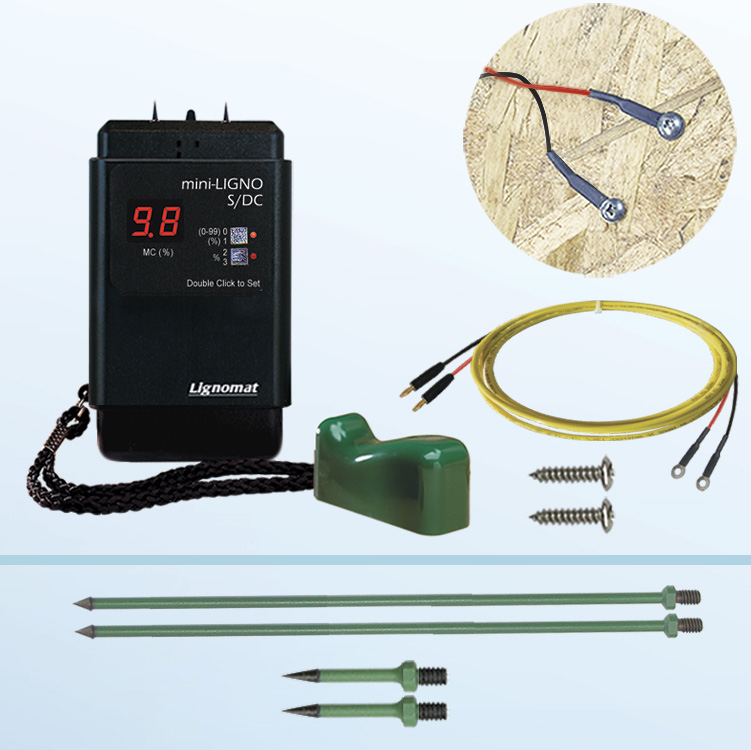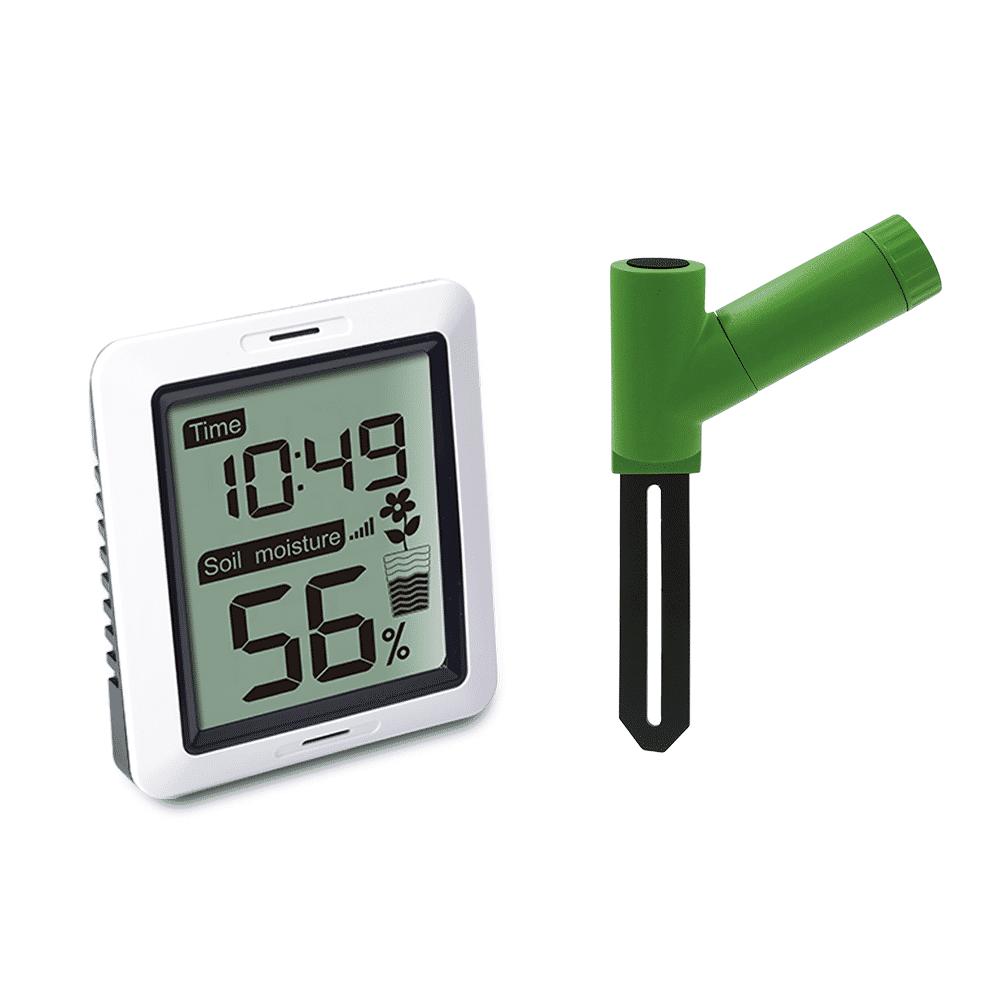Look Into the Globe of Dampness Meters: Every Little Thing You Required to Know
In the world of wetness meters lies a world of precision and practicality that often goes unnoticed. These tools, while apparently uncomplicated, hold a riches of info that can considerably impact various sectors and applications. Recognizing just how moisture meters run, the different types available, and their diverse uses can shed light on their relevance in making certain top quality and effectiveness. By exploring the intricacies of dampness meters, one can discover an important device that goes beyond mere dimension, using insights that can make a significant distinction in various areas.
How Dampness Meters Work
Wetness meters operate by determining the electrical conductivity or capacitance of products to determine the dampness content existing - Moisture Meter. These meters are important tools throughout different sectors, including woodworking, farming, and construction. By using various approaches such as pin-type or pinless modern technology, wetness meters give precise analyses that help experts make educated choices
Pin-type dampness meters function by placing the sharp pins right into the product being examined. The electric conductivity in between the pins is then determined, with greater dampness degrees resulting in boosted conductivity. On the various other hand, pinless dampness meters use electromagnetic signals to check a bigger location without creating any damage to the material's surface. These meters are optimal for swiftly analyzing moisture levels in large areas or finished products.
No matter the approach made use of, moisture meters play a vital function in protecting against concerns such as mold and mildew development, architectural damage, or product defects triggered by excess moisture. Understanding how these meters job is essential for ensuring the high quality and stability of materials in various applications.
Kinds of Dampness Meters
Given the essential duty wetness meters play in various sectors, it is vital to comprehend the various types available to specialists for precisely assessing dampness levels. There are largely two major kinds of moisture meters: pinless and pin-type wetness meters.
Pin-type dampness meters use two pins that are put into the product being tested to gauge the electrical resistance in between them. This method is generally utilized for timber, drywall, and other structure materials. Pin-type meters give accurate analyses at particular midsts, making them perfect for recognizing wetness slopes.
On the other hand, pinless wetness meters use electromagnetic sensing unit plates to scan a larger location of the product without causing any type of damages. This type appropriates for quickly scanning big locations and is generally used for floor covering, wall surfaces, and ceilings. Pinless meters are convenient for taking readings on completed surfaces without leaving any visible marks.
Both kinds of dampness meters have their benefits and are picked based on the particular demands of the work at hand. Comprehending the distinctions in between these kinds is essential for experts to make accurate moisture analyses.
Applications Across Industries
With diverse capabilities, dampness meters find extensive application across various markets, helping specialists in ensuring optimal conditions for structures and materials. In the agriculture industry, moisture meters are vital for figuring out the dampness web content in grains, seeds, and hay, making certain top quality control and avoiding mold growth. Construction professionals depend on dampness meters to analyze the dampness degrees in structure materials like concrete, timber, and drywall, which is crucial for maintaining structural stability and stopping problems like rot or mold. The floor covering industry utilizes moisture meters to measure the dampness web content in subfloors prior to setting up various flooring, stopping expensive damages as a result of excess dampness. In the food market, moisture meters are made use of to check and manage moisture levels in products such as grains, nuts, and dried out fruits to keep quality and top quality. Furthermore, moisture meters play a vital duty in the reconstruction and damage control sector by assisting experts determine and address water damages in buildings immediately. Across these varied industries, dampness meters are indispensable tools for ensuring the quality, safety and security, and long life of various products and products.
Tips for Utilizing Dampness Meters
Use the moisture meter's calibration settings to guarantee exact readings when determining the wetness material in various products. Furthermore, make sure the meter is set to the correct dampness range for the product you are determining to acquire the most precise outcomes.

When using a pin-type dampness meter, put the pins to the ideal deepness suggested for the material being tested. This ensures that the moisture analyses are drawn from the right depth within the material, giving an extra precise representation of its moisture web content. For find out here now pinless wetness meters, check that keep in mind to keep proper call with the product's surface to get reputable analyses.

Frequently check and replace the batteries in your moisture meter to avoid imprecise readings because of low power. When not in usage to prolong its life-span and maintain its accuracy, Shop the meter in a safe and dry location. By following these pointers, you can maximize the efficiency of your moisture meter and get exact moisture web content measurements across different materials.

Maintenance and Calibration
To make certain the accuracy of wetness material measurements, regular upkeep and calibration of the dampness meter are necessary actions in its correct functioning. Calibration readjusts the moisture meter to make sure that it provides reliable and constant outcomes.
Calibration needs to be done regularly, particularly if the moisture meter is used regularly or in important applications where exact measurements are required. By maintaining and adjusting the wetness meter frequently, users can rely on the precision of the moisture web content dimensions obtained.
Verdict
In verdict, dampness meters play a crucial role in various industries by accurately determining the dampness material of materials. Recognizing exactly how these tools work, the different kinds available, and appropriate maintenance and calibration are crucial for acquiring reliable outcomes. Whether in agriculture, building, or production, the use of wetness meters helps make sure quality assurance and effectiveness in procedures.
Construction experts rely on wetness meters to analyze the moisture degrees in structure materials like drywall, concrete, and wood, which is important for keeping structural stability and protecting against issues like rot or mold and mildew. The floor covering industry makes use of wetness meters to measure the dampness More about the author material in subfloors prior to installing different flooring treatments, preventing pricey problems due to excess moisture.Use the wetness meter's calibration setups to ensure precise readings when gauging the moisture web content in different products. By adhering to these tips, you can make best use of the performance of your moisture meter and obtain exact dampness web content dimensions across various materials.
In final thought, moisture meters play a vital role in various industries by accurately determining the dampness content of materials.